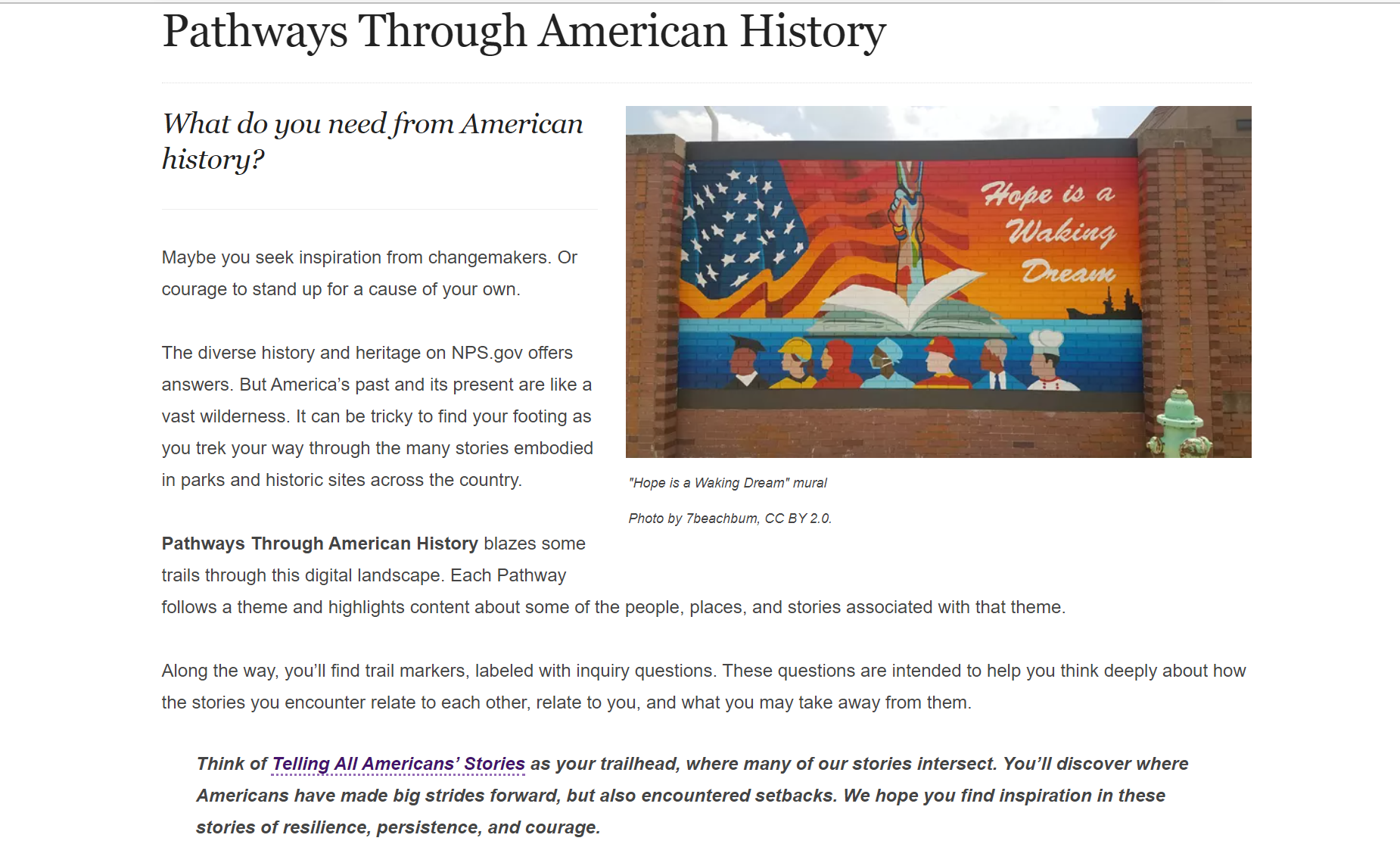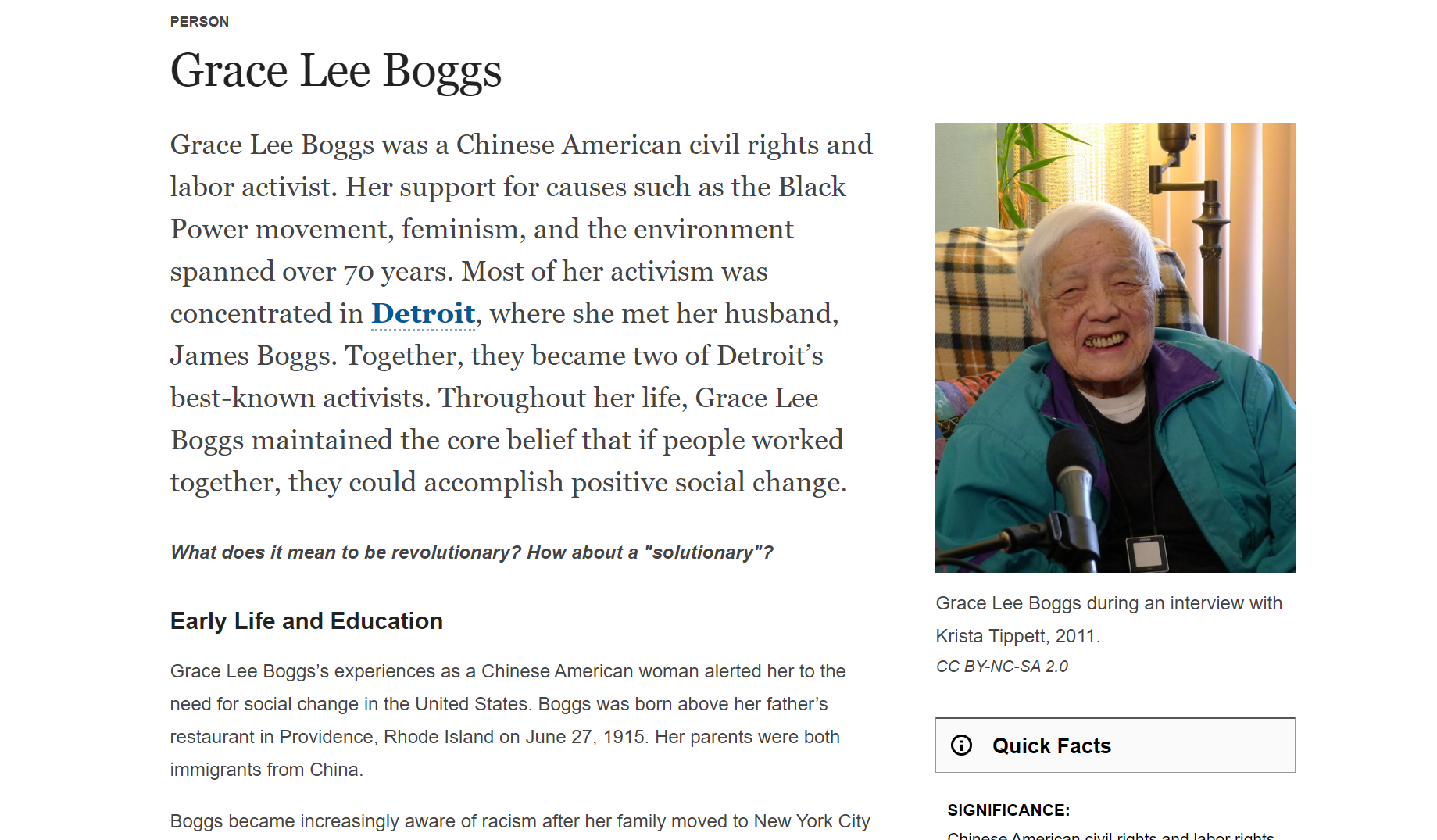Last updated: September 19, 2022
Article
Intern and Fellow Highlights: Jade Ryerson

Courtesy of Jade Ryerson
We are celebrating our interns and fellows and the work they do all April long for National Internship Awareness month! You may have heard of cultural resources, but what exactly does this work entail and what type of work do interns and fellows do?

Courtesy of Jade Ryerson.
Everyone has a personal connection to cultural resources. Cultural resources help us define what makes us human through understanding the evidence we leave behind and continue to create today. This can include anything from archives, archaeological sites, museum collections, structures and cultural landscapes, and resources with significance to a group of people traditionally associated with them.
To learn more about cultural resources, visit the Cultural Resources, Partnerships, and Science Directorate page.
So... What exactly does a cultural resource internship look like?
Interns and fellows work with multiple offices, programs, and parks through partner organizations such as the American Conservation Experience (ACE) and National Council for Preservation Education (NCPE). They work on various projects that range from tribal consultation and policy to telling the stories of women in World War II and even to connecting local communities with public history.
Their work adds value to the National Park Service and supports our mission to preserve for the enjoyment, education, and inspiration of this and future generations. This April 2022 we are featuring Jade Ryerson (she/her) to celebrate.
Meet Jade, who is the American Conservation Experience (ACE) Resource Assistant at the NPS Cultural Resources Office of Interpretation and Education (CROIE).

Courtesy of Jade Ryerson.
Tell us a little bit about yourself.
I’m currently doing my master’s in Heritage Studies and Public History at the University of Minnesota, Twin Cities. I did my Bachelor’s in public history with minors in museum studies and archaeology at DePaul University in Chicago. Throughout undergrad, I worked my first public history job with the university library’s Special Collections and Archives and later took a fellowship at the DePaul Art Museum. I started working with the NPS Cultural Resources Office of Interpretation (CROIE) leading up to the Nineteenth Amendment Centennial in 2019, so I’ve produced a lot of women’s history content for NPS.gov. I started in the Virtual Student Federal Service Program, then worked as a National Council for Preservation Education intern. Now I’m with the American Conservation Experience. When I’m not working, I enjoy trying new recipes, bike riding, and soapstone carving.
Describe a little bit about what you do in your position? What does a typical day for you look like?
My job is to research write about historic places and the stories that they embody. My personal research interests align with the goal of the office, to tell all Americans’ stories, so I tend to focus on stories about people who were women, BIPOC, and LGBTQ+. Most of the stories are associated with National Register listings, National Historic Landmarks, or are locally designated properties in Certified Local Governments. All of the work I’ve done with the office has been remote, so I rely on a lot of digitized primary sources available via HathiTrust, the Library of Congress, and other digital repositories. I also use journal articles and monographs (when I can get my hands on them) to piece together the story. I like to have different projects to bounce between so I might be editing based on colleagues’ feedback, working on a different draft, and researching for another project all at the same time.
In your own words, how would you describe cultural resources?
Cultural resources include historic places, landscapes, artifacts, and other tangible things that humans have interacted with that can tell us about what life was like in the past.
Do you have any advice for people interested in this work?
I would recommend seeking out a lot of different experiences because they can help you figure out what kinds of roles would suit you best. There are many different public history-related opportunities in archives, museums, preservation, cultural resources management, etc. The heritage fields are very interdisciplinary so learning how other folks approach things can be a really valuable asset. Another piece of advice (that I’m still trying to navigate myself) is to let yourself be vulnerable and honest about your interests and passions. Academia tends to silo emotion and emphasize objectivity. But in this field, the stories we tell can be more meaningful for both us and the public when we bring our full, authentic selves to tell them.

Courtesy of Jade Ryerson.
What do you enjoy most about your work?
I love research because it’s a lot like detective work. Finding the stories and then figuring out a creative way to tie them to a historic place is such a unique challenge and I love that we get to shed a light on the different NPS preservation and partner programs. I also think about history and what we need from it in a very civically engaged way (which something I tried to capture in Pathways through American History). Secretary Haaland recently articulated it so well. She basically said that these stories can show us how similar we are to one another, but also how differently we experience the world. The significance of that isn’t lost on me and I consider it a great responsibility to share a fuller version of the American experience with the public.

Courtesy of Jade Ryerson.
Where do you hope to see yourself in the next coming years?
When I finish my graduate program, I hope to continue working at the intersection of public history and historic preservation. My goal is to diversify what has traditionally been commemorated and recognized as historically significant. I think it’s possible to accomplish that through the interpretation-based work I do now, through more formal historic property documentation, and by interfacing directly with historically excluded groups through community-centered work. I’m also really interested in some of the more academic questions about how power is embedded in place and preservation policies, so I’m considering pursuing my PhD at some point too.
You can read more of Jade’s work by searching “Jade Ryerson” on the NPS website search engine or searching “Pathways Through American History,” “Places of Hidden Figures,” and/or “Grace Lee Boggs” on the NPS website search engine.
Join us in saying thank you to cultural resources interns this month!
For more information on CRPS internship programs contact Paloma Bolasny at e-mail us
For more information on youth and young adult programs and opportunities in the National Park Service, visit Youth Programs (U.S. National Park Service) (nps.gov)
